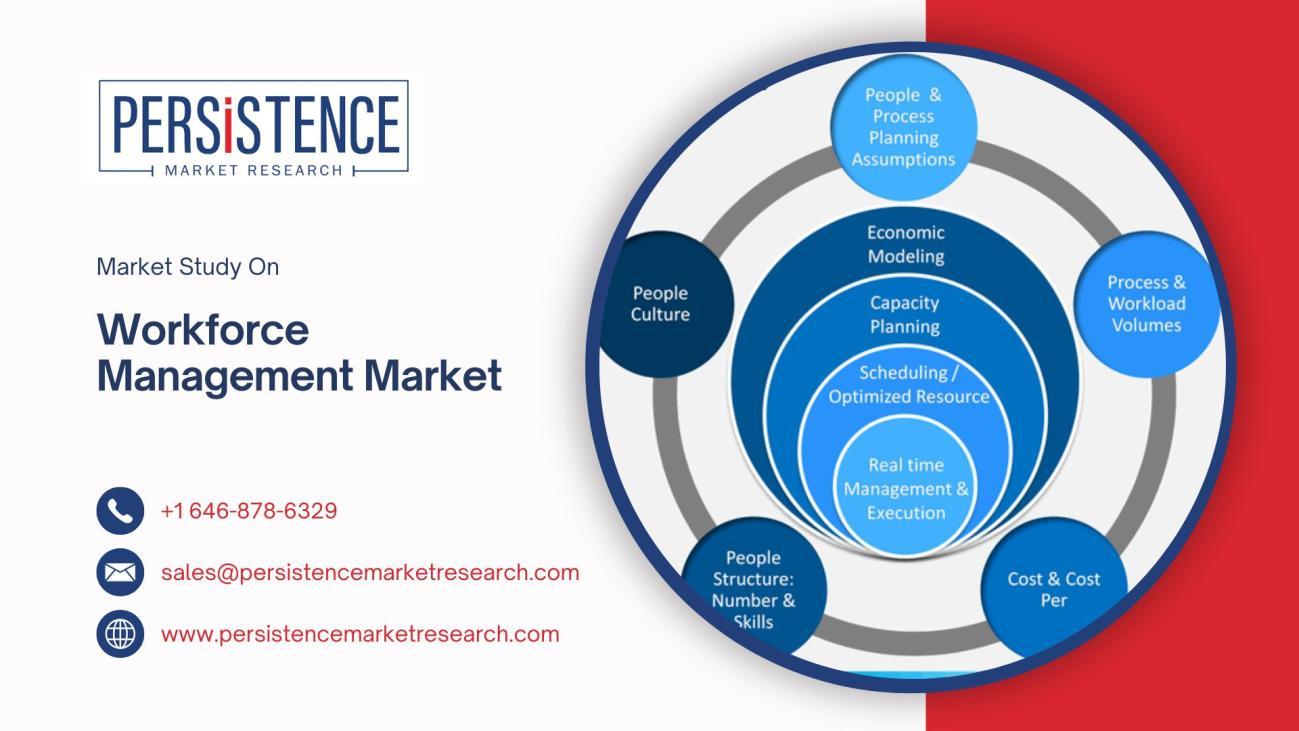Exploring the Rapid Growth of the Workforce Management Market Globally
In an era where businesses continuously strive for enhanced efficiency and productivity, the global workforce management market is gaining unprecedented momentum. With rapid technological advancements, evolving workplace dynamics, and the increasing need for operational efficiency, the market is poised for significant growth in the coming years. Workforce management (WFM) solutions empower organizations to optimize workforce utilization, streamline scheduling, improve labor law compliance, and enhance overall employee engagement. As businesses recognize the value of these tools, the global WFM market is set to witness robust growth.
The Current Market Landscape
According to Persistence Market Research's projections, the workforce management market was valued at US$ 7,665.3 Mn in 2023 and is expected to grow significantly, reaching US$ 20,559.2 Mn by the end of 2033. This impressive growth trajectory indicates a compound annual growth rate (CAGR) of 9.5% from 2023 to 2033. The market is estimated to value US$ 9,056.6 Mn in 2024, reflecting consistent yearon-year growth.
The key factors driving this upward trend include the increasing adoption of cloud-based solutions, the integration of artificial intelligence (AI) and machine learning (ML) in workforce management tools, and the rising emphasis on employee well-being and work-life balance.
Key Market Drivers
1. Technological Advancements:
o The integration of AI and ML in workforce management systems is revolutionizing how organizations predict workforce demand, optimize scheduling, and manage employee performance.
o Cloud-based WFM solutions offer scalability, flexibility, and cost-effectiveness, making them a preferred choice for businesses of all sizes.
2. Shift Towards Remote and Hybrid Work Models:
o The pandemic accelerated the adoption of remote and hybrid work models, increasing the demand for efficient workforce management tools to ensure productivity and engagement.
o These models require sophisticated tools for tracking time, attendance, and performance remotely.
3. Compliance and Regulatory Needs:
o Workforce management systems help organizations maintain compliance with labor laws and regulations, reducing the risk of legal and financial penalties.
4. Employee Engagement and Retention:
o Modern workforce management solutions focus on employee experience by offering features such as self-service portals, flexible scheduling, and performance feedback, which contribute to higher retention rates.
Regional Insights
North America:
o Leading the global market due to early adoption of advanced technologies and a high concentration of major workforce management solution providers.
Europe:
o Steady growth driven by stringent labor laws and increasing emphasis on employee well-being.
Asia-Pacific:
o Fastest-growing region, fueled by rapid industrialization, increasing adoption of cloud technologies, and a growing focus on operational efficiency.
Industry Challenges
Despite the promising growth prospects, the workforce management market faces several challenges:
Data Security and Privacy Concerns:
o With increasing digitalization, safeguarding sensitive employee data remains a significant challenge.
High Implementation Costs:
o Small and medium enterprises (SMEs) may find it difficult to invest in advanced WFM solutions due to budget constraints.
Resistance to Change:
o Resistance from employees and management towards adopting new technologies can slow down implementation.
Emerging Trends in Workforce Management
1. AI-Driven Analytics:
o Advanced analytics tools powered by AI are providing deeper insights into workforce productivity and performance.
2. Mobile Workforce Management:
o Mobile applications enable employees to access schedules, request time off, and receive notifications, enhancing flexibility and communication.
3. Workforce Wellness Integration:
o Modern WFM solutions are incorporating wellness metrics to monitor employee wellbeing, helping to improve engagement and reduce burnout.
4. Automation of Routine Tasks:
o Automating repetitive administrative tasks such as payroll processing and attendance tracking allows HR teams to focus on strategic initiatives.
Future Outlook
The future of the workforce management market looks promising, with significant investments expected in technological innovation. As businesses prioritize operational efficiency and employee well-being, the demand for advanced workforce management solutions will continue to surge.
Persistence Market Research's projections reflect a market that is not only expanding in size but also evolving in scope. With a CAGR of 9.5% from 2023 to 2033, the market is set to revolutionize how organizations manage their most valuable asset their workforce.
For more information on Workforce Management Market Share, please visit Persistence Market Research

